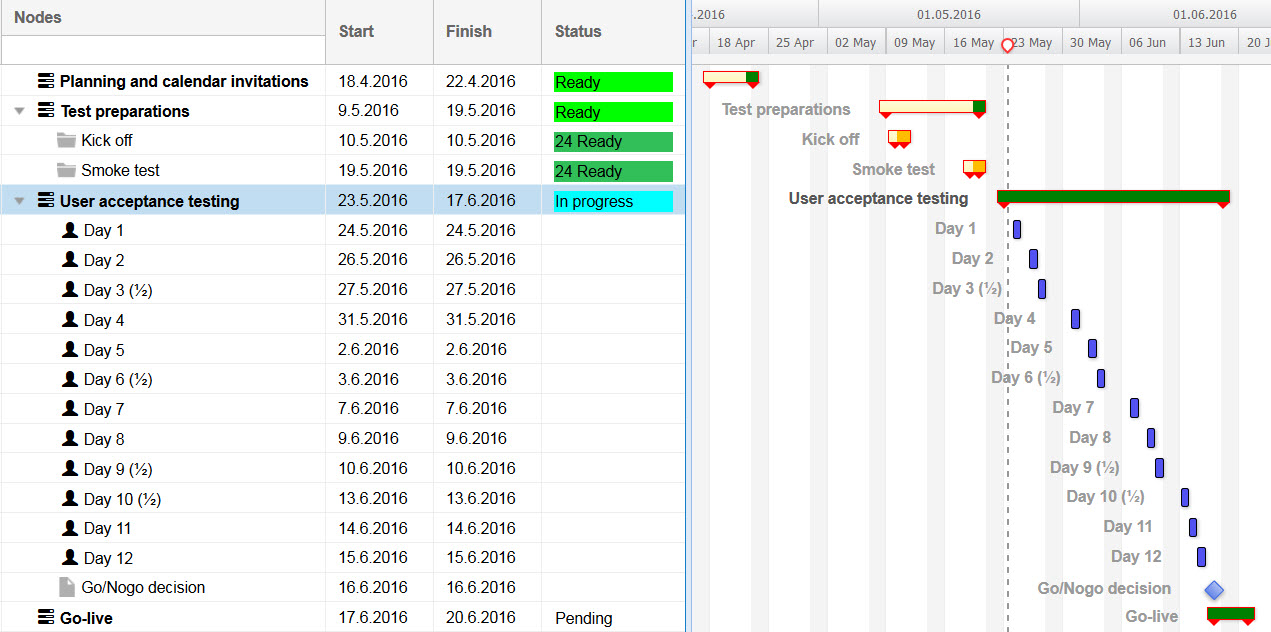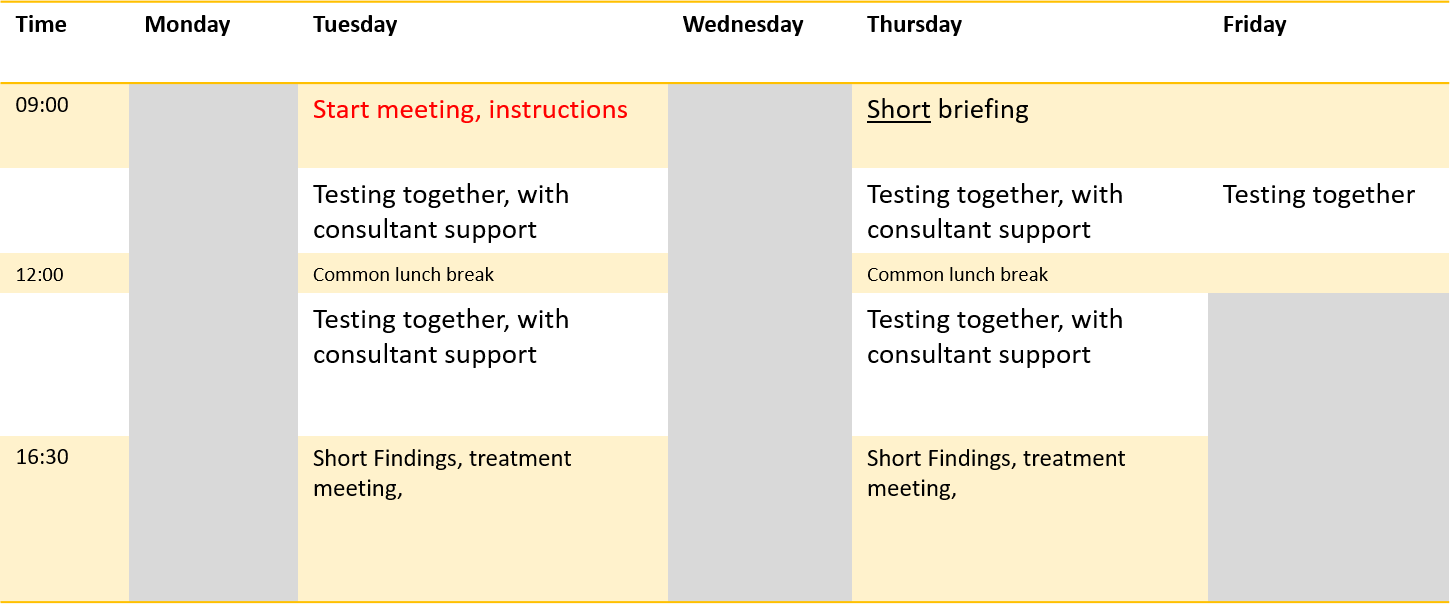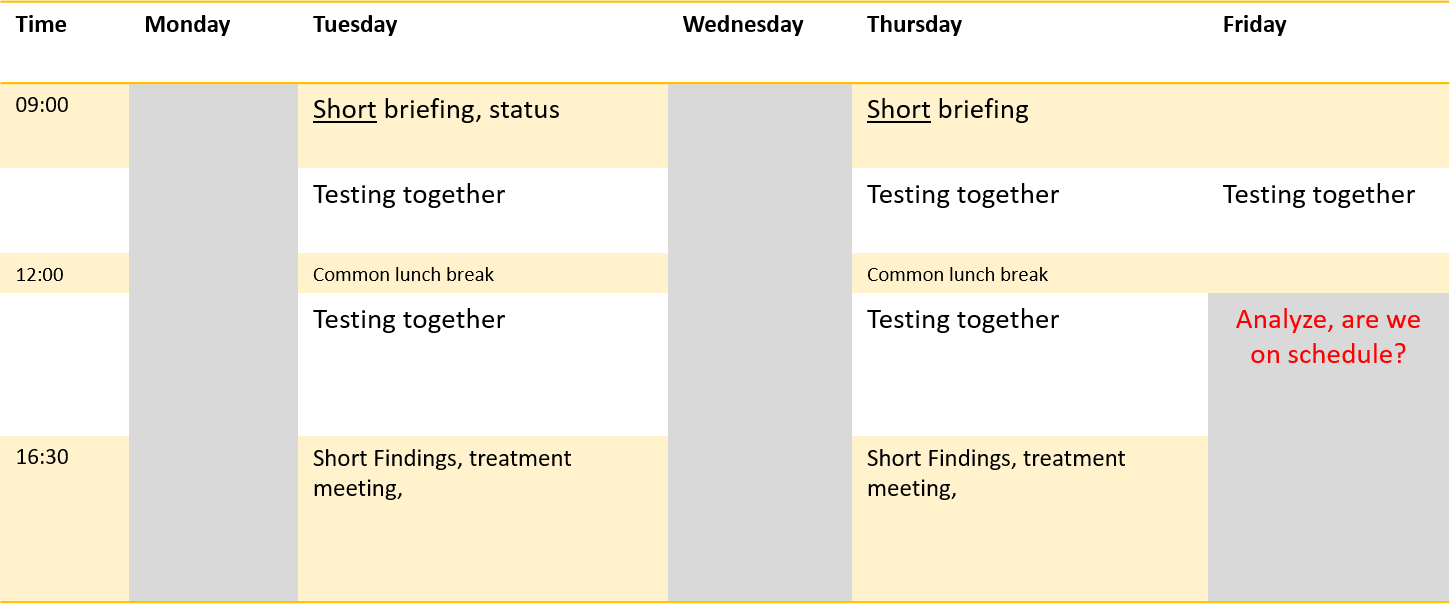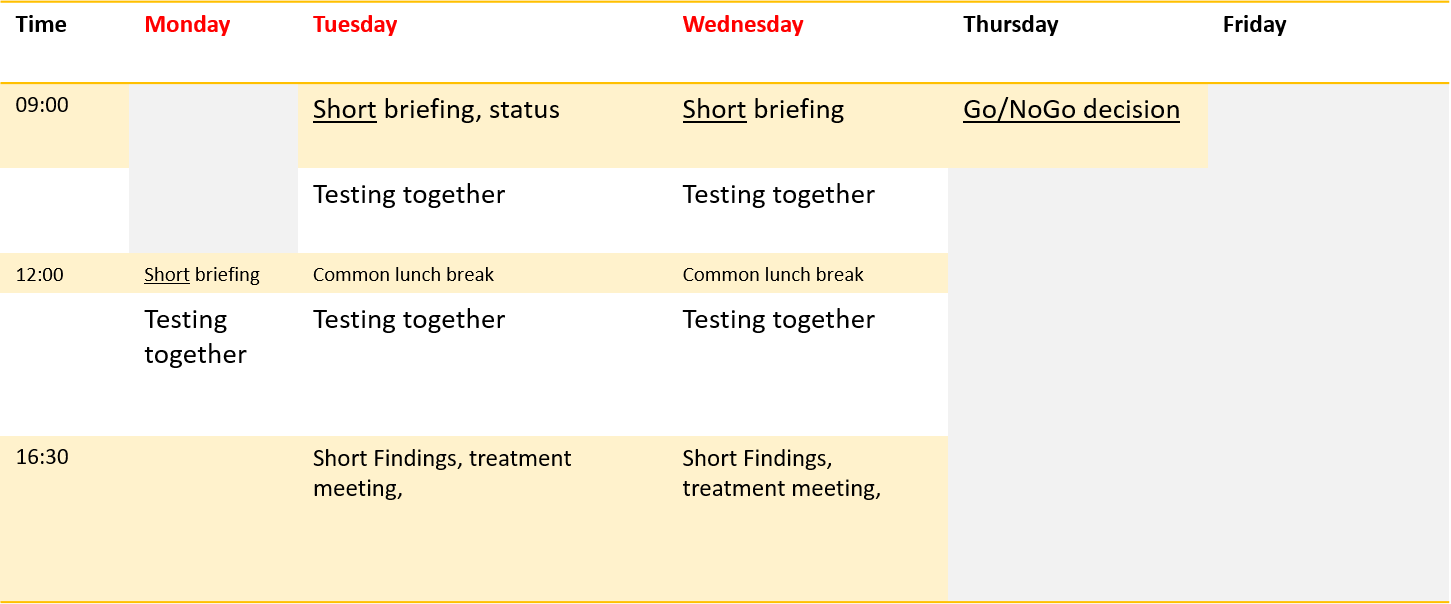Part 3/11: Testing Schedule, Making Use of Resources Effectively
Blog post series about testing development projects, part 3/11
Articles about planning software testing and managing it.
Point of views:
- Business critical development projects, where IT plays a strong role.
- One or more outside vendors.
- Client’s business personnel as testers. They are business professionals, not software testing professionals.
- Goals for testing:
- Make sure that the implemented solution supports the needs of the business.
- Make sure the implementation doesn’t endanger the business.
The structure of the example plan
In my previous post I wrote about planning resources. Part 2/11: Resource Plan for Acceptance Testing
Now we create testing schedule for the example plan, ergo a plan about what to do and when.
Starting point:
- Acceptance testing, where the testers are people from the business
- Duration: four weeks
- Resources available 50% of the working time
- Simplified example, so the idea is more clear
At this point, there are several things missing from the schedule. The calendar will be completed in the coming parts of the blog series.

The plan and calendar invites
Calendar invites for the business should be made at least one month in advance, otherwise all other activities will start to fill up people’s calendars. This of course means that the planning needs to start early on as well.
Kick off
Going through acceptance testing on schedule, and in sterling quality, is vital for the success of business critical projects. Kick off -event is a good place to sell your plan for the people taking part of acceptance testing. If the sale is not done, several things might happen:
- The value of your calendar invites crashes down. Everything else overrides the testing invites and eventually testers won’t arrive for testing.
- Testing and logging observations is not systematic. Reporting and management is getting more difficult.
- Testers and vendors are not committed to your plan.
Even though everyone is always busy, it’s important to find time for communication.
Smoke
Before starting acceptance testing it’s good to put it trough so called smoke testing. This will make sure that we actually have the readiness to start acceptance testing.

Testing days
The most effective days for testing are usually Tuesday, Thursday and Friday until lunch.
- On Monday, there’s usually a lot of things to do for the business to start the week
- On Wednesday fixes are usually made, so there’s something to test on Thursday.
- Friday afternoon people’s minds start to wander.
The beginning is always the hardest, week 1
To get the testing effectively going, there needs to be a strong start.
- Clear work lists, so that everyone knows what they are doing.
- Clear instructions, so that everyone knows how to test and log observations.
- Strong support from the consults, so that testing is done right.
- Strong ability to react, so that the problems can be solved.

Keep on going with the testing, weeks 2-3
Make sure that every tester is working effectively. When things seem to go well, don’t let it fool you. Going through observations is so important I’ll write another post about it.

Finish testing, week 4
Finishing every last test takes huge effort from the project manager. How to fix correct defects, so that the tests can be properly finished? It’s like building a giant puzzle.
Because this is something we know, there should be made room for the final spurt when planning the testing schedule. If you look closely the picture below, there are one or two days left for spare.
Important note: Make sure the testing manager has enough time for managing. This means no extra meetings, because managing testing should be made a priority.

Things missing from the calendar
I simplified the example, so that the idea would stand out better. In my next posts I’ll complete the calendar. I’ll go through things like training for testing, implementation exercises, quality gate…
Download eBook Business Critical Project Running?
Download a guide on software testing in development projects. You’ll avoid many common mistakes and succeed in the implementation.
Did you know?
Quality Gate is a user friendly tool for software development and testing projects
Improved testing efficiency, 70% less emails and real time reporting
Read more
Roadmap is a user friendly software for development projects
Easily plan and execute even the most challenging development project
Read more

